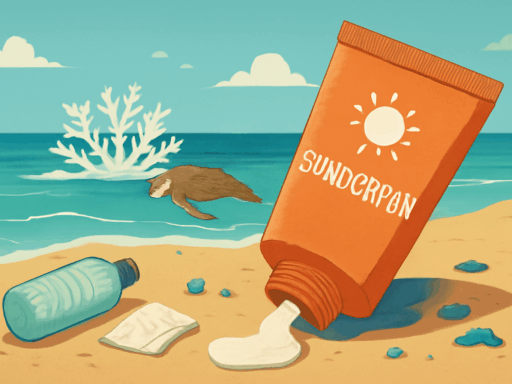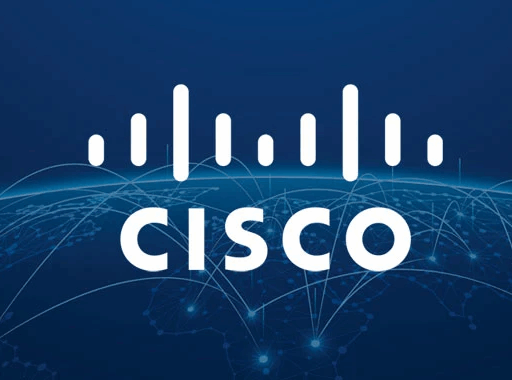- Nestlé’s Sustainability Strategy and Goals: A Detailed Breakdown
- 1. Net-Zero and Carbon Emissions: Striving for a Climate-Positive Future
- 2. Regenerative Agriculture: Promoting Healthy, Resilient Agricultural Systems
- 3. Packaging Innovation and Circular Economy: Reducing Waste Through Innovation
- 4. Water Stewardship: Securing Water Resources for Communities and Ecosystems
- Innovative Technologies Driving Sustainability at Nestlé
- Measurable Impacts: Quantifying Sustainability Success
- Challenges and Areas for Improvement
Nestlé, one of the largest and most influential food and beverage companies in the world, has made significant strides toward embedding sustainability into its core business strategy. As part of its commitment to achieving net-zero greenhouse gas (GHG) emissions by 2050, Nestlé has aligned itself with the Science-Based Targets Initiative (SBTi) to ensure that its targets meet the latest climate science. The company is recognized globally for its efforts in regenerative agriculture, innovative packaging solutions, and carbon emissions reductions across its entire supply chain.
Nestlé’s dedication to corporate social responsibility (CSR) and environmental stewardship is highlighted in its 2022 Sustainability Report, which reflects the company’s transparent and measurable progress toward creating shared value for both the environment and society.
Nestlé’s Sustainability Strategy and Goals: A Detailed Breakdown
Nestlé’s sustainability strategy is structured around several critical focus areas, aiming to reduce its environmental footprint while enhancing social impact. Below is a detailed look at the key pillars driving Nestlé’s sustainability efforts:
1. Net-Zero and Carbon Emissions: Striving for a Climate-Positive Future
Nestlé’s overarching goal is to achieve net-zero GHG emissions by 2050, and the company has committed to reducing its emissions across Scope 1, 2, and 3 (which includes emissions from operations, energy use, and the entire supply chain). In 2021, Nestlé successfully reduced 4 million metric tons of carbon emissions. This marks a significant leap toward achieving its interim target of a 20% reduction in GHG emissions by 2025. To make these reductions possible, Nestlé has been focused on transitioning its operations to renewable energy.
Currently, 66% of Nestlé’s global operations are powered by renewable energy, with a target to achieve 100% renewable energy by 2025. This transition has already resulted in substantial energy savings and a significant reduction in the carbon intensity of its global operations. However, Scope 3 emissions, which are often the most challenging to address, remain a significant area of focus for the company. These emissions account for more than 80% of Nestlé’s overall carbon footprint, making it essential for Nestlé to work closely with its supply chain partners, especially in agriculture, to reduce emissions in that area.
2. Regenerative Agriculture: Promoting Healthy, Resilient Agricultural Systems
Nestlé’s commitment to regenerative agriculture goes beyond just reducing emissions; it focuses on enhancing soil health, improving water conservation, and promoting biodiversity. By doing so, Nestlé is working to transform agricultural systems into more sustainable and resilient ecosystems, benefiting both the environment and the farmers involved.
The company has pledged an investment of CHF 1.2 billion by 2025 to scale regenerative agriculture initiatives across its supply chain. Nestlé works with over 500,000 farmers globally, helping them implement sustainable farming practices such as crop rotation, agroforestry, and reduced tillage. These efforts aim to restore the health of the soil and enhance its ability to sequester carbon, making agricultural practices both climate-smart and more economically viable for farmers.
In 2022, Nestlé sourced 20% of its agricultural raw materials from sustainable sources, and the company is well on its way to achieving 50% sustainable sourcing by 2030. This goal is not just a part of Nestlé’s sustainability agenda but is also integrated into its supply chain resilience strategy, helping mitigate the risks of climate-related disruptions to agricultural production.
3. Packaging Innovation and Circular Economy: Reducing Waste Through Innovation
Nestlé is fully committed to promoting a circular economy, where resources are reused, and waste is minimized. The company has set an ambitious goal to make 100% of its packaging recyclable or reusable by 2025. As of 2022, 85% of Nestlé’s packaging is recyclable, and the company has already eliminated 350,000 metric tons of virgin plastic from its packaging since 2018.
In addition to reducing plastic use, Nestlé is investing in alternative packaging materials. For example, the company is exploring the use of paper-based and compostable materials, as well as biodegradable plastics, to replace traditional plastics in food and beverage packaging. Nestlé is also increasingly using post-consumer recycled content in its packaging, thus reducing its reliance on virgin plastic production.
Moreover, the company has expanded its recycling infrastructure, working with local communities and governments to increase the collection and recycling of packaging waste. Nestlé has also invested in technologies that enable the recovery of materials from used packaging, ensuring that valuable resources are reused and waste is minimized.
4. Water Stewardship: Securing Water Resources for Communities and Ecosystems
Nestlé has made significant progress in managing its water usage. Since 2010, the company has reduced its water withdrawal by 31% across its operations, while also ensuring improved water access for communities around the world. Water is a critical resource in the food and beverage industry, and Nestlé recognizes its responsibility to manage this resource efficiently.
One of Nestlé’s key water-related initiatives is its water replenishment projects in high-risk regions like sub-Saharan Africa. These projects aim to not only improve water security for the company’s operations but also ensure access to safe water for local communities. Nestlé has worked with local stakeholders to build water infrastructure, such as wells, water treatment plants, and irrigation systems, to address water scarcity in vulnerable regions.
Additionally, the company has implemented water efficiency measures at its factories, reducing water use in production processes and recycling water in manufacturing operations wherever possible.
Innovative Technologies Driving Sustainability at Nestlé
Nestlé continues to harness cutting-edge technologies to drive its sustainability goals, increasing both operational efficiency and environmental impact reduction. Here are some key technological innovations powering Nestlé’s sustainability efforts:
AI for Supply Chain Optimization: Maximizing Efficiency
Nestlé leverages AI-powered tools to optimize its logistics and supply chain management. These technologies help reduce the carbon footprint of transportation by ensuring efficient routing and reducing empty trips, thus minimizing fuel consumption. Moreover, AI-driven insights help Nestlé make more informed decisions regarding sourcing materials and managing supply chain emissions, further contributing to its carbon reduction goals.
Plant-Based Products: Shaping a Sustainable Diet
Nestlé is investing heavily in plant-based innovations through brands like Garden Gourmet and Sweet Earth. These brands offer sustainable, plant-based alternatives to traditional meat products, which have a significantly higher environmental footprint. By developing and scaling plant-based products, Nestlé is contributing to lower GHG emissions, reduced water use, and decreased deforestation, particularly in regions where animal agriculture is a leading cause of environmental degradation.
In 2022, Nestlé reported that its plant-based portfolio contributed to a reduction of 30% in carbon emissions compared to its animal-based equivalents. This represents a crucial step in transforming the global food system towards a more sustainable future.
Waste-to-Energy: Closing the Loop on Waste
Nestlé has also embraced waste-to-energy technologies at several of its facilities worldwide. These technologies convert food waste into renewable energy, such as biogas, which can be used to power factory operations or contribute to local energy grids. This not only helps Nestlé reduce waste but also supports its zero-waste goals, helping the company achieve its sustainability ambitions while reducing dependence on non-renewable energy sources.
Measurable Impacts: Quantifying Sustainability Success
Nestlé’s sustainability efforts are not just theoretical—they have resulted in measurable outcomes that showcase the tangible impact of the company’s strategies:
- CO2 Emission Reduction: Nestlé’s carbon reductions in 2021 equate to removing 850,000 cars off the road annually, a significant achievement in reducing global warming potential.
- Renewable Energy Transition: The transition to 66% renewable energy has resulted in substantial carbon savings and cost reductions for Nestlé.
- Recycling and Waste Management: Since 2020, Nestlé has recovered and recycled over 1.2 million metric tons of packaging waste, significantly reducing landfill contributions.
Challenges and Areas for Improvement
Despite notable progress, Nestlé still faces challenges in achieving its sustainability goals, particularly in the following areas:
Scope 3 Emissions
As mentioned earlier, Scope 3 emissions remain a significant challenge for Nestlé. These emissions are the result of the supply chain activities over which the company has limited direct control. To address this, Nestlé is working on improving supply chain transparency and collaborating with suppliers to ensure that sustainable practices are adopted throughout its entire network. Achieving full carbon neutrality will require comprehensive and coordinated efforts across a diverse global supply chain.
Consumer Adoption of Sustainable Packaging
Although Nestlé has made impressive strides in sustainable packaging, one of the most significant barriers to progress remains consumer behavior. Nestlé must continue to engage and educate consumers about the importance of recycling and reducing plastic waste. Increasing consumer participation in recycling programs will be key to ensuring that the company’s sustainable packaging initiatives are effective in practice.
Future Plans and Long-Term Sustainability Goals
1. Achieving Net-Zero Emissions by 2050
Nestlé is fully committed to becoming carbon-neutral by 2050. To reach this goal, the company plans to:
- Reduce emissions across its entire value chain, including Scope 1, 2, and 3 emissions (direct operations, energy use, and supply chain).
- Scale up its use of renewable energy, with a target of achieving 100% renewable energy by 2025 across its global operations.
- Increase investments in sustainable packaging, with the goal of making 100% of packaging recyclable or reusable by 2025.
2. Expansion of Regenerative Agriculture
Nestlé plans to scale its efforts in regenerative agriculture by significantly increasing its investments:
- The company is set to invest CHF 1.2 billion by 2025 in regenerative farming practices, focusing on improving soil health, water conservation, and biodiversity.
- By 2030, Nestlé aims to ensure 50% of its agricultural raw materials are sustainably sourced, with a focus on promoting resilience and sustainability in agricultural supply chains.
3. Advancing Sustainable Packaging Solutions
To drive the circular economy, Nestlé plans to:
- Achieve 100% recyclable or reusable packaging by 2025.
- Continue reducing plastic usage, eliminating over 350,000 metric tons of virgin plastic since 2018.
- Increase the use of biodegradable packaging and paper-based solutions.
- Continue consumer education and behavior change campaigns to encourage recycling and waste reduction.
4. Investment in Carbon Offset Projects
As part of its strategy to achieve carbon neutrality, Nestlé is scaling its carbon offset initiatives:
- The company plans to invest in projects like reforestation, wetland restoration, and soil carbon sequestration to offset approximately 13 million metric tons of CO2 annually by 2030.
- These offset projects will help balance emissions that are difficult to eliminate entirely through direct actions.
5. Water Stewardship and Access to Safe Water
Nestlé will continue its work in water stewardship and improving access to clean water:
- The company aims to reduce water withdrawal in its operations further and continue its water replenishment projects in water-scarce regions.
- Nestlé has committed to protecting water resources for communities, particularly in areas at risk of water scarcity, such as sub-Saharan Africa, where it will focus on improving water access.
6. Expansion of Plant-Based and Sustainable Product Offerings
As part of its commitment to healthier and more sustainable diets, Nestlé plans to:
- Expand its plant-based product offerings, with brands like Garden Gourmet and Sweet Earth, to cater to the growing demand for alternatives to animal-based products.
- Increase efforts in food innovation and product reformulation, focusing on reducing the environmental impact of its products while ensuring they are nutritious and sustainable.
7. Increased Transparency and Supply Chain Collaboration
Nestlé is committed to driving greater transparency and collaboration across its supply chains:
- The company plans to work more closely with suppliers to improve sustainability practices and ensure they meet Nestlé’s standards on carbon emissions, water use, and sustainable sourcing.
- Supply chain traceability will be enhanced through digital tools to ensure transparency and trace the origins of raw materials.
8. Driving Consumer Behavior Change
Nestlé recognizes that achieving its sustainability goals will require consumer engagement:
- Sustainability education campaigns will be a key component of its future strategy to drive more sustainable consumption patterns and encourage consumers to adopt eco-friendly habits, such as recycling and reducing food waste.
9. Collaborating with Stakeholders for Systemic Change
In addition to its internal goals, Nestlé is committed to:
- Collaborating with governments, NGOs, and industry groups to advocate for policies that promote sustainability and address environmental challenges, particularly in climate action, plastic waste management, and sustainable food systems.
Competitors in Sustainability: Comparing Nestlé’s Leadership
Nestlé operates in a competitive landscape where sustainability has become a key differentiator. While the company has made significant strides, several of its industry peers are also pioneering sustainable practices, often in different ways. Below is a comparison of Nestlé’s sustainability efforts with other major companies in the food and beverage industry.
1. Unilever
Unilever, a multinational consumer goods company, has long been recognized for its leadership in sustainability. The company has embedded sustainability into its brand values and corporate strategy, which is evident through its Sustainable Living Plan.
Key Sustainability Efforts:
- Plastic Reduction: Unilever has committed to reducing its use of virgin plastic by 50% by 2025 and has already introduced plastic-free packaging for several products.
- Carbon Neutrality: The company aims to achieve net-zero carbon emissions by 2039, ahead of Nestlé’s 2050 target.
- Sustainable Sourcing: Unilever sources 100% of its palm oil sustainably and is actively working to improve the sustainability of other ingredients, such as tea, paper, and soy.
Comparison to Nestlé:
- Strengths: Unilever has made more progress in plastic reduction and plastic-free packaging compared to Nestlé, positioning itself as a leader in packaging sustainability.
- Weaknesses: While Unilever is ahead in plastic reduction, Nestlé has made greater strides in regenerative agriculture and sustainable sourcing, with Nestlé investing CHF 1.2 billion in regenerative farming by 2025.
2. Danone
Danone, a French multinational specializing in dairy and plant-based products, has made sustainability a core focus of its business. Danone’s approach is similar to Nestlé in some areas but differs in its emphasis on plant-based innovations and water stewardship.
Key Sustainability Efforts:
- Biodiversity: Danone has committed to protecting biodiversity in its supply chain and is working toward carbon neutrality by 2050.
- Sustainable Packaging: The company has committed to 100% recyclable packaging by 2025 and has introduced biodegradable packaging solutions.
- Water Stewardship: Danone is committed to improving access to clean water, particularly in water-stressed regions.
Comparison to Nestlé:
- Strengths: Danone is a leader in plant-based products, which have a smaller environmental footprint than animal-based alternatives. It is also ahead of Nestlé in terms of its commitment to biodiversity and sustainable water usage.
- Weaknesses: Nestlé’s regenerative agriculture initiatives far outpace Danone’s investments in sustainable farming, positioning Nestlé as the stronger player in this area.
3. PepsiCo
PepsiCo, a global food and beverage giant, has made significant efforts toward sustainability, with an emphasis on water conservation, plastic waste reduction, and sustainable farming.
Key Sustainability Efforts:
- Sustainable Agriculture: PepsiCo has committed to sustainable sourcing of ingredients like potatoes and corn, focusing on reducing water and pesticide use.
- Water Stewardship: The company has been working to replenish water in high-risk areas, with the goal of returning more water to communities than it uses in manufacturing.
- Circular Economy: PepsiCo is committed to using 100% recyclable, compostable, or biodegradable packaging by 2025 and aims to reduce virgin plastic use by 35% by 2025.
Comparison to Nestlé:
- Strengths: PepsiCo has strong leadership in water stewardship and plastic reduction, particularly in its beverage business. The company is also investing in alternative packaging and waste-to-energy technologies.
- Weaknesses: While PepsiCo is making strides in water and packaging, Nestlé has a more comprehensive approach to regenerative agriculture and supply chain emissions, which provides Nestlé with an edge in areas related to sustainable farming.
4. Coca-Cola
As one of the world’s most recognized beverage companies, Coca-Cola has increasingly focused on sustainability. The company’s sustainability strategy revolves around water stewardship, circular packaging, and reducing carbon emissions.
Key Sustainability Efforts:
- Water Stewardship: Coca-Cola is dedicated to replenishing the water used in its beverages and has committed to replenishing 100% of the water it uses by 2030.
- Recycling and Packaging: Coca-Cola aims to make 100% of its packaging recyclable by 2025 and has increased its use of recycled PET (rPET) in plastic bottles.
- Carbon Emissions: The company is working toward reducing its carbon footprint across operations and transportation, with a focus on transitioning to renewable energy.
Comparison to Nestlé:
- Strengths: Coca-Cola has made substantial investments in water replenishment and packaging circularity, with efforts to improve packaging waste management systems.
- Weaknesses: While Coca-Cola has strong water stewardship programs, Nestlé’s focus on regenerative agriculture and supply chain transparency positions it ahead in terms of long-term sustainability and agricultural resilience.
5. General Mills
General Mills, known for its brands like Cheerios, Nature Valley, and Haagen-Dazs, has been progressively advancing its sustainability goals, with a particular focus on sustainable sourcing and climate change mitigation.
Key Sustainability Efforts:
- Sustainable Agriculture: General Mills has committed to sourcing 100% of its oats sustainably and working with farmers to reduce the carbon footprint of its agricultural supply chains.
- Waste Reduction: The company has a zero-waste initiative and aims to reduce food waste across its operations.
- Carbon Reduction: General Mills has set a goal to reduce GHG emissions by 28% by 2025.
Comparison to Nestlé:
- Strengths: General Mills is a leader in sustainable sourcing for crops like oats and is on track to meet its sustainable farming goals. The company’s waste reduction efforts are also notable.
- Weaknesses: Nestlé’s initiatives in regenerative agriculture, such as its CHF 1.2 billion investment, significantly outpace General Mills, providing Nestlé with a more holistic and forward-thinking approach to sustainable farming.
Key Takeaways:
Water Stewardship: Coca-Cola and PepsiCo have made notable advancements in water replenishment projects, especially in regions experiencing water scarcity. While Nestlé also focuses on water stewardship, Coca-Cola’s aggressive initiatives in this area position it as a leader in water-related sustainability.
Regenerative Agriculture: Nestlé is a clear leader in this area, outpacing competitors like Unilever, PepsiCo, and Danone with its CHF 1.2 billion investment by 2025. This positions the company as a frontrunner in promoting sustainable farming practices globally.
Plastic Waste Reduction: While Nestlé has made significant progress in recycling and packaging innovation, competitors like Unilever and Danone have made bolder commitments, particularly in the development of plastic-free packaging solutions.
Carbon Emissions: Nestlé’s net-zero emissions goal by 2050 is in line with the industry’s leading sustainability targets. However, companies like Unilever and PepsiCo have set even more ambitious net-zero carbon targets for 2039, setting a quicker pace in terms of carbon reduction.
Nestlé’s sustainability strategy demonstrates a robust and comprehensive approach to environmental responsibility. By focusing on areas such as net-zero emissions, regenerative agriculture, and circular economy initiatives, Nestlé is setting a high bar for the food and beverage industry. The company’s progress is measurable, but there remain areas for improvement, particularly in addressing Scope 3 emissions and increasing consumer adoption of sustainable packaging. As Nestlé continues to scale these initiatives, its leadership in sustainability will continue to inspire other companies and industries to prioritize environmental stewardship for a sustainable future.
Sources
https://www.nestle.com/investors/annual-report
https://sciencebasedtargets.org
https://www.unilever.com/sustainable-living
https://www.danone.com/sustainability.html
https://www.pepsico.com/sustainability
https://www.cokecce.com/sustainability
https://www.generalmills.com/sustainability
https://www.weforum.org
https://www.greenbiz.com
https://www.epa.gov/ghgemissions
http://www.fao.org/
https://www.globalreporting.org/






